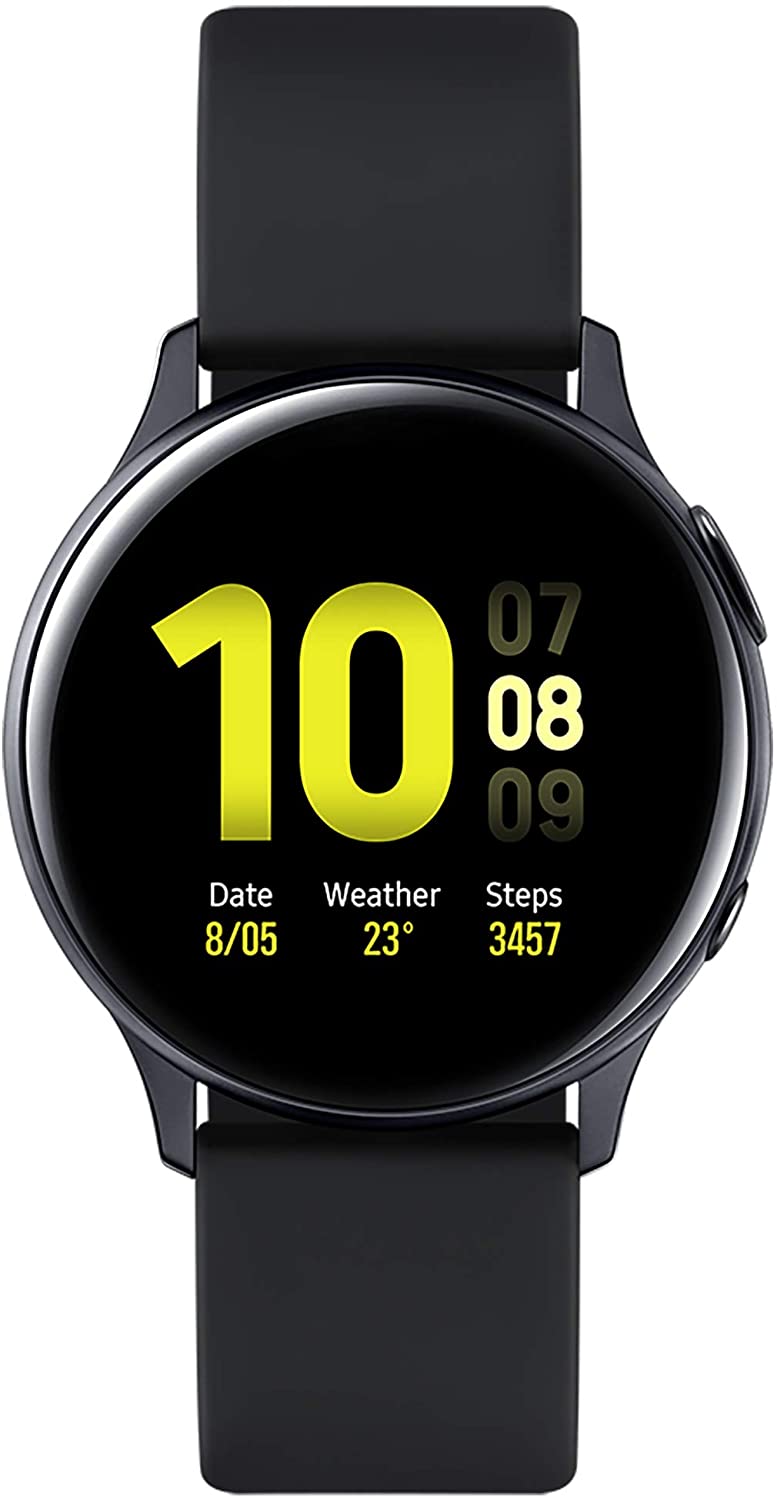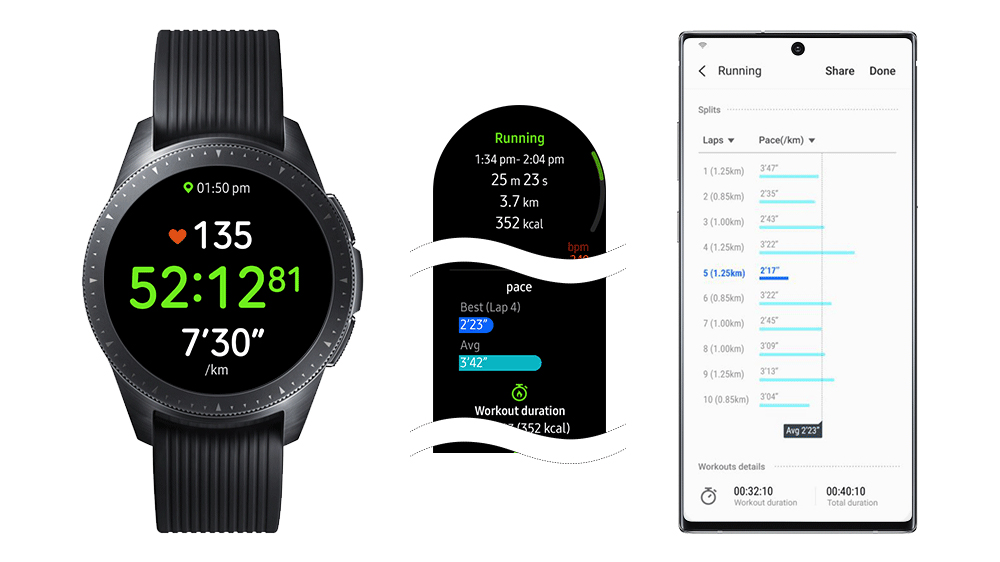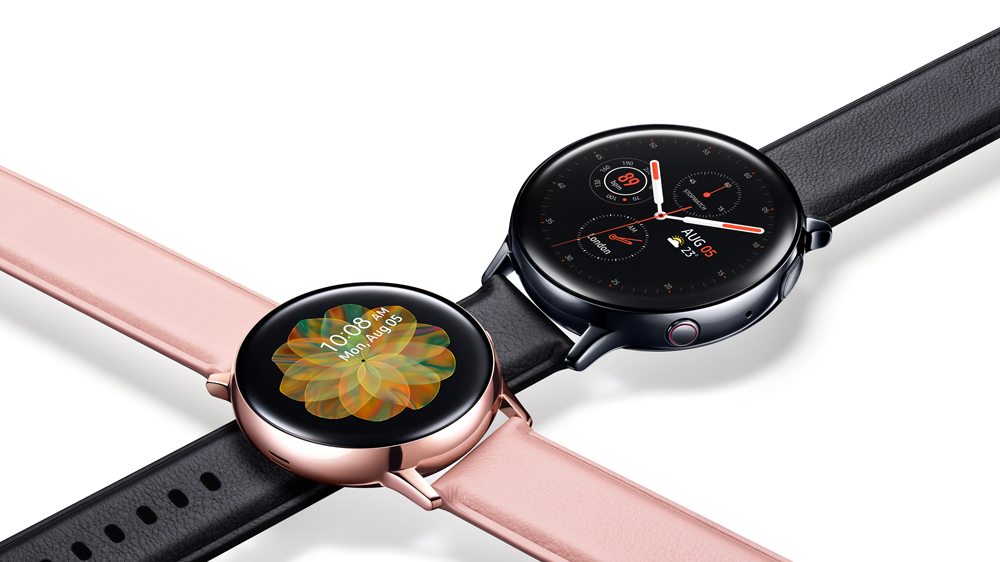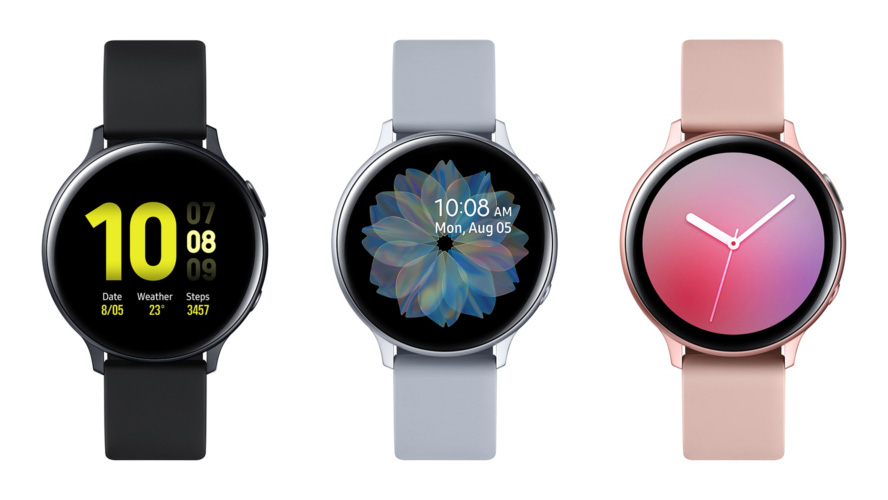Our Verdict
A solid, great-looking all-round fitness watch that offers only minimal improvements on its predecessor.
For
- Stylish looks
- Vibrant display
- Digital rotating bezel
- Push buttons to stop workouts
Against
- Relies on poor app
- Short battery life (two days)
You can trust Coach
The Samsung Galaxy Watch Active 2 is a solid all-round fitness watch packed with useful features that should be more than enough for the casual fitness fan. It’s stylish and presents your data in an accessible, easy-to-understand way.
But certain niggles – its weak battery life, confusing hidden menus and reliance on the Samsung Health app – begin to grate after a while. Its biggest weakness, however, is that it’s not much better than the original watch, which is available for much less money.
Buy from Samsung | 40mm from £269, 44mm from £289

Samsung Galaxy Watch Active2 Bluetooth Aluminium 44 mm - Aqua Black (UK Version)
£299.99
Samsung Galaxy Watch Active 2 In Depth
While new phone versions come around once a year, updated smartwatches – Apple Watches aside – tend to be a bit less frequent. The reason for this is twofold: first, smartwatches are less demanding, so don’t really need the fastest chips to run; second, it’s pretty rare that new features justify a whole new watch.
The second point is something Samsung should probably have considered before releasing the Galaxy Watch Active 2 just eight months after the original. Because while both are great, the improvements don’t really justify the “2” at the end of the name.
The newer version adds optional 4G LTE (not on my review model, and it brings the total price to £399), a 0.1in or 0.3in larger screen (on the 40mm and 44mm sizes respectively), improvements to the heart rate monitor hardware, and theoretical support for wrist-based electrocardiograms – though at the time of writing, this hasn’t had the regulatory go-ahead to work in the UK.
The 2 also introduces a rather clever digital rotating bezel. Some smartwatches – including other Samsung models – let you navigate by physically twisting the bezel. The Galaxy Watch Active 2 tries to emulate this with a strip on the edge of the touchscreen. Simply run your finger over this, and you’ll be able to cycle through menus with a satisfying haptic buzz to replicate real resistance. It won’t fool you into thinking the bezel is actually moving, but it’s certainly better than tapping the tiny on-screen buttons.
Even this, though, has been made available on the first Galaxy Watch. Galaxy Watch Active 1.5 would be a more apt name, really.
Tracking Activity With The Samsung Galaxy Watch Active 2
Like the best fitness watches, the Samsung Galaxy Watch Active 2 is big on being seen and not heard, requiring very little input from you and automatically detecting motion and tracking accordingly. In theory it can tell the difference between activities, but a couple of times it has now mistaken my walking for elliptical training. Perhaps I walk a little oddly, but my guess is that it’s tried to learn from the fact I was using a cross-trainer a lot in the pre-lockdown days and is assuming that this must be me carrying on with my training, blissfully unaware of the global pandemic unfolding around us.
One of the smarter features is a pop-up that tells you when you’ve been walking for ten minutes and encourages you to keep going. If you regularly walk the same route, you may find yourself seeing how far you can get before the notification chimes. Likewise, it’ll notice when you’re sedentary for too long, and pop up with stretching exercises demonstrated on the screen for you to copy.
It’ll also monitor your heart rate at regular intervals and give you a breakdown on your range for each day you wear it, giving you a good indication of how your cardiovascular health is improving over time. Or not, given the current state of the world.
Smart Features On The Samsung Galaxy Watch Active 2
I have to hand it to Samsung: the company has perfected notifications. The watch clearly displays messages on screen in an easily readable fashion, and even lets you reply from the wrist either with presets, a teeny-tiny keyboard or via voice dictation. It’s the last of these which is the best, and I found it to be pretty accurate at transcribing exactly what I said – though it’ll always let you edit before sending, so there shouldn’t be any howlers unless you’re careless. By default, the watch only sends through messaging app notifications, but this can be customised on the phone if you think you’re getting too many or, more likely, too few.
Samsung has included some clever health-orientated extras here for those who want them: you can do breathing exercises, or manually track your water and caffeine intake on the watch. And if you use these features often enough, they can be added as a widget to ensure they’re easy to access.
There’s also an app store where you can download new smartwatch apps to improve your “phone away from phone”. In truth there’s very little to get excited about here. It’s quite telling that the featured section of the store includes such ultra-basic as Calculator and Samsung web browser. There are also useful third-party apps from the likes of Strava, Endomondo and MyFitnessPal but the fact that none of these scores more than 2.5 stars is revealing.
But the biggest smart feature is currently missing – and has been since launch. Like the Apple Watch, the Galaxy Watch Active 2 is technically capable of performing an electrocardiogram (ECG) test, measuring electrical activity of the heart. This should be able to detect irregular heartbeats, or if your heart is overworking, potentially saving your life. The trouble is that the feature still doesn’t work, and while it was originally scheduled for Q1 of 2020, the whole global pandemic thing means it’s taken a backseat with no ETA in sight.
Running With The Samsung Galaxy Watch Active 2

In the past, I’ve found Samsung wearables with built-in GPS to be a little disappointing at measuring distances accurately. I’ve always put this down to the fact that they start immediately when you press go without waiting for a solid lock on, as devices from Polar, Fitbit and Garmin do.
It’s a little off compared to my own Garmin Forerunner 245, which normally measures a 5K parkrun bang on. Not wildly off – we’re only talking 0.10 to 0.15 kilometres over a 5km distance – but enough to ensure it won’t become my default running companion any time soon.
At first I thought that workout screens were set in stone and unchangeable, but in fact you can put any three fields you like on the screen. For some reason this is hidden away in the S-Health app on the watch, not where you’d expect it to be within the running/cycling apps themselves. You can have up to three metrics on a single screen, which is one fewer than I’d like, but fine for most people. Multiple screens are possible, but nobody really wants to have to concentrate on swiping when they’re trying to pay attention to the trail. Unfortunately the two physical buttons don’t help here: one stops and starts activities, and the other bafflingly returns you to the watch home screen while leaving the activity running in the background.
You get the basics you need for post-run analysis in the Samsung Health app – duration, distance, calories, speed, pace, elevation, heart rate and cadence. The app is fine as far as it goes, but it feels a little basic compared with the crazy amount of data Garmin Connect offers while lacking the user-friendly intuitiveness of Fitbit. On top of this, it doesn’t have a web interface, so any analysis will be strictly phone-based. Oh, and it doesn’t play too nicely with other apps, supporting only Technogym and Strava – the latter has long been known for its flaky sync with Samsung devices.
Working Out With The Samsung Galaxy Active Watch 2
What the device lacks in user-friendliness, it certainly makes up for in sheer scope of supported activities. Thirty-nine are officially supported, six of which will kick in automatically – walking, running, dynamic workout, cycling, rowing and elliptical training. It covers everything from mountain climbing to swimming, and Samsung lets you pin favourites to a widget on the watch screen to save you the pain of scrolling through menu after submenu.
Thanks to lockdown I haven’t been able to test the majority of these, but accuracy will of course vary. It’s simple enough to follow a runner via GPS calculations but, say, calories consumed while mountain climbing will have to be something of a guess for obvious reasons.
Nonetheless, I did track a few cross-trainer sessions before the lockdown, and found the Galaxy Watch Active 2 somewhat conservative in its estimates compared with other trackers. Over the duration of a 46-minute elliptical session, the Galaxy Watch Active 2 claimed a calorie burn of 494, while the TechnoGym equipment I was on thought it was 1,069. My Garmin Forerunner 245, meanwhile, split the difference and called it 831. It was likely somewhere between the two wrist-based wearables.
See related
Sleep Tracking With the Samsung Galaxy Watch Active 2
Sleep tracking seems pretty good – certainly better than the Garmin Forerunner 245 on my other wrist. While the Garmin thought I was asleep when I was actually watching an episode of The Twilight Zone (evidently not a good one, then), the Galaxy Watch Active 2 correctly pinned down my lights-out moment, as well as providing more plausible data overall. The Garmin thought I had just 11 minutes of deep sleep, while the Galaxy Watch Active 2 estimated it as an hour and three minutes, for example.
Personally, I’m not entirely convinced of the usefulness of sleep tracking data, and the Samsung Health app doesn’t really have any insights on this either – unless you consider being told your average bedtime and wake-up time useful.
Battery Life On The Samsung Galaxy Watch Active 2
Battery life is a definite weak spot – unfortunately that’s an inevitable side effect of having a bright, colourful and vibrant AMOLED screen on. To be fair, Samsung only promises “over a day” in normal usage and it clears the expectations set by that low hurdle, typically going between 48 and 60 hours without needing a charge. This drops to a day if you switch on the always-on display, of course.
Fortunately, charging it is pretty straightforward. Not only can you use the bundled magnetic charger in any USB slot, but it also charges off other wireless chargers – including the back of a compatible Samsung phone if it has PowerShare technology.
Where Can I Wear The Samsung Galaxy Watch Active 2 Without People Laughing At Me?

This is where the Samsung Galaxy Watch Active 2 really does shine: it’s one of the best-looking smartwatches with a bright 1.2/1.4in circular face and minimalist design. While the strap is a pretty unlovely rubber affair, you can sub it out for any 20mm band of your choosing by pulling on the pins.
To be clear, it’s nowhere near as good-looking as a traditional timepiece – the main watch is still quite chunky, protruding a good centimetre from the wrist – but in smartwatch circles it’s a veritable supermodel, so you can wear it freely without worrying about fashion faux pas.
Should You Buy Something Else?
As good as the Samsung Galaxy Watch Active 2 is, for my money the answer is undoubtedly yes: the original Samsung Galaxy Watch Active, which, in RRP terms, is available for nearly £100 less and is often reduced further. Bluntly, you’re not missing much by going back a generation, which isn’t wholly surprising given the two were born just eight months apart. The improvements – larger screen, improvements to heart rate monitoring, and theoretical electrocardiogram support – simply don’t add up to £100 to my mind.
Serious runners might also find the Samsung Health app a little shallow for data collection and analysis too. For them the Garmin Vivoactive 3, now available for just £150, is a far better buy.
Alan is a freelance tech journalist and mostly covers fitness trackers for Coach.
Alan was not what you would call a big fitness guy growing up, but has been radicalised by parkrun and taken up running in a big way. Although nowhere near podium at races, as a late starter he does at least know that he can still get faster. Alan has written for ShortList, Tom’s Guide, Trusted Reviews and Expert Reviews, among others.


